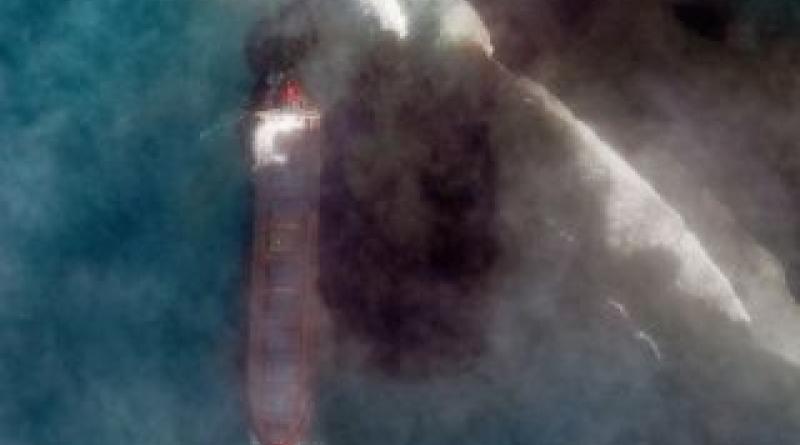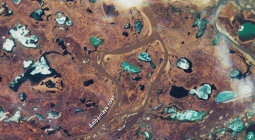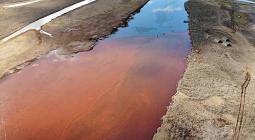Oil spill off Mauritius is visible from space.

The Indian Ocean island nation of Mauritius is on the brink of an environmental catastrophe after a bulk carrier struck a coral reef off its coast in late July, an accident that has led to a large oil spill visible from space. The accident could lead to an even greater environmental disaster if the ship — whose cargo includes fuel oil, diesel and lubricant oil — breaks apart further, according to news sources.
The ship, the Japanese-owned MV Wakashio, hit a coral reef off Mauritius' southeast coast, near Pointe d'Esny, on July 25. In the weeks since, a crack has appeared on its hull, meaning that the ship's cargo is in jeopardy, a shipment that includes 4,290 tons (3,894 metric tons) of low-sulfur fuel oil, 228 tons (207 metric tons) of diesel and 99 tons (90 metric tons) of lubricant oil, which the ship was carrying from China to Brazil, according to The Swaddle, an Indian news site.
"This is the first time that we are faced with a catastrophe of this kind, and we are insufficiently equipped to handle this problem," Sudheer Maudhoo, the fishing minister of Mauritius told The New York Times.
The spill didn't happen immediately. The MV Wakashio became stuck when it collided with the coral reef about 2 miles (3.2 kilometers) off the Mauritius coast. After the ship ran aground, its crew was safely evacuated. Since then, efforts to stabilize the ship and pump out the oil have failed, all while the Indian Ocean's rough waves have battered the vessel, Maudhoo and environment minister Kavy Ramano told The Guardian.
It wasn't until this past week that oil — spilling from a new crack in the ship's hull — began gushing into Mauritius' blue lagoons — waters that attract international tourists and support the nation's fishing industry, according to The New York Times.
Images of the oil spill were captured by satellites operated by Maxar Technologies. These images, taken the morning of Aug. 7, show plumes of black oil saturating the lagoon and drifting northwest toward the shore.
Nagashiki Shipping, the company that owns the MV Wakashio, said that salvage efforts were on hold due to poor sea conditions, but that it was monitoring the situation, The Guardian reported. "Nagashiki Shipping takes its environmental responsibilities extremely seriously and with partner agencies and contractors will make every effort to protect the marine environment and prevent further pollution," the company said in a statement, as reported by The Guardian. Even though the ship is owned by Nagashiki Shipping, the 984-foot-long (300 meters) vessel, built in 2007, flies the Panama flag.
The location of the spill, Pointe d'Esny, is an environmentally sensitive area that is protected under an international treaty for the conservation and sustainable use of wetlands, known as the Ramsar Convention on Wetlands of International Importance. The area is also close to the Blue Bay Marine Park, a tourist destination, according to The Swaddle.
Several groups are trying to stop the flow of the liquid cargo from the sinking ship. These include the Mauritius National Coast Guard, the environment services company Polyeco and the French island of Reunion.
This oil spill "is likely one of the most terrible ecological crises ever seen on the small island country," Greenpeace Africa said in a statement Friday (Aug. 7), according to Bloomberg Green.
This is not the only oil spill to happen in 2020. At least eight other big spills have happened so far this year, according to a catalogue on Wikipedia. This list includes the May 29 disaster, when Russia declared an emergency after 22,000 tons (20,000 metric tons) of oil spilled into the Arctic Circle, making it one of the largest oil spills in modern Russia.
*for more images click here
10 August 2020
LIVESCIENCE




